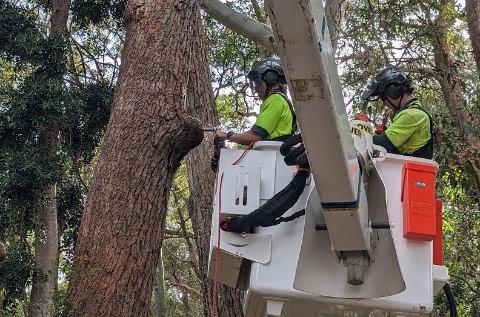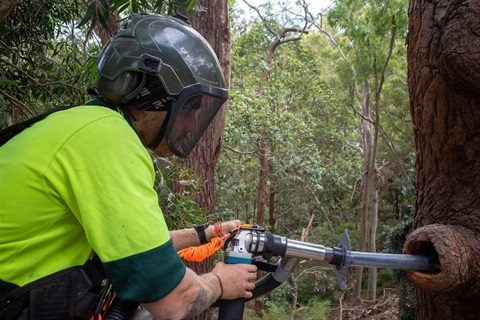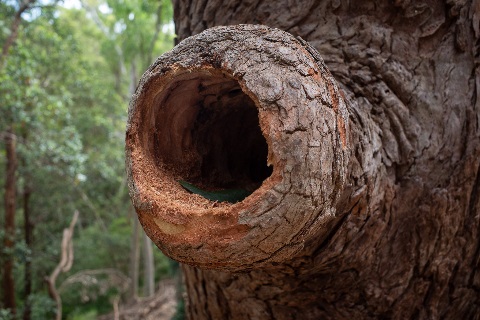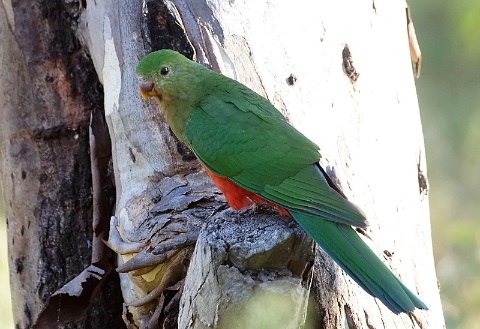Creating hollows for wildlife
Tree hollows provide homes and protection for our local wildlife.

Our staff recently worked with an experienced arborist to create 6 habitat hollows in a large Eucalyptus tree on the edge of Cooper Park.
We asked Rachel from our Environment and Sustainability team to tell us more about the this project and its benefits for local wildlife.
Why are hollows prime real estate for local wildlife?
Unfortunately naturally-developed hollows can take 100 years or more to form and they are disappearing from our urban landscapes when mature trees are removed.
The wildlife in our local area that rely on hollows include possums, rainbow lorikeets, kookaburras, king parrots, sulphur-crested cockatoos, owls, microbats, skinks, frogs and more. These diverse species all need slightly different hollows to provide them with protection from the weather and predators as they roost and nest.

Hollow being created by an arborist
How were these hollows created?
This Swamp Mahogany (Eucalyptus robusta) on the edge of Cooper Park was dropping limbs near a walking path and needed maintenance. Our tree team pruned overhanging branches and engaged an arborist with specialised training and equipment to drill 6 hollows into the tree.
This work will make the tree safer for people walking nearby whilst creating homes for wildlife living in Cooper Park.

The entrance of a newly created hollow
What species are these hollows made for?
These hollows are a suitable size for parrots and other small birds, but other wildlife like possums and microbats may make a home in them too.
How will we know if the created hollows are successful?
Over the next few months, Council staff will keep an eye out for any birds or mammals that might be making themselves at home in the new hollow-bearing tree!
Based on experience in other parts of Sydney we expect this approach to be more effective than nest boxes because it creates conditions that are similar to those of a natural hollow.

King Parrot near a natural tree hollow (Image: Peter Cook)
More information